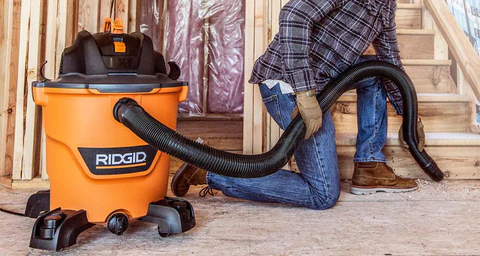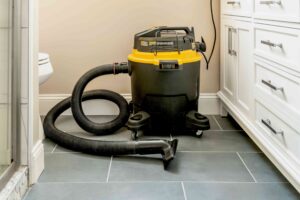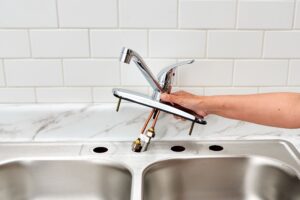Do You Remove The Filter When Using A Shop Vac For Water

Mastering Wet Cleanup: Do You Remove the Filter When Using a Shop Vac for Water?
Introduction
Shop vacuums, also known as wet-dry vacs, are invaluable tools for cleaning up various messes, whether it’s dry debris in your workshop or unexpected water spills at home. One common question that arises when dealing with wet cleanup is whether to remove the filter from the shop vac. In this comprehensive guide, we’ll explore the considerations, steps, and best practices for using a shop vac for water cleanup, with a focus on whether the filter should be removed.
Table of Contents
- Understanding Shop Vac Filters
- Types of Shop Vac Filters
- Can You Use a Shop Vac for Water?
- When to Remove the Filter for Water Cleanup
- Steps to Remove the Filter
- Shop Vac Filter Alternatives for Water Cleanup
- Drying Out the Shop Vac After Water Cleanup
- Common Shop Vac Water Cleanup Mistakes to Avoid
- 10 FAQs About Using a Shop Vac for Water Cleanup
- Conclusion
1. Understanding Shop Vac Filters
Shop vac filters play a crucial role in separating debris from the air and preventing it from reaching the motor. They are designed to capture particles of various sizes, ensuring the vacuum operates efficiently and maintains optimal suction power.
2. Types of Shop Vac Filters
Shop vacs come with different types of filters, including:
- Cartridge Filters: These are common in many shop vacuums and are suitable for both dry and wet pickup. They can be made from materials like paper or polyester.
- Foam Sleeve Filters: Often used for wet pickup, foam filters are designed to capture larger debris and liquids. They are washable and reusable.
- HEPA Filters: High-Efficiency Particulate Air filters are effective at trapping very fine particles. They are suitable for those with allergies or when dealing with fine dust.
3. Can You Use a Shop Vac for Water?
Yes, many shop vacuums are specifically designed for both wet and dry cleanup. However, the type of filter your shop vac is equipped with will determine its suitability for water cleanup. Cartridge filters and foam sleeve filters are commonly used for wet pickup, while HEPA filters may not be suitable for direct water exposure.
4. When to Remove the Filter for Water Cleanup
In many cases, removing the filter for water cleanup is recommended. This is especially true when dealing with large volumes of water or potentially dirty water that may clog the filter quickly. Removing the filter helps prevent damage to the filter and ensures efficient water pickup.
5. Steps to Remove the Filter
Here are the general steps to remove the filter from a shop vac for water cleanup:
- Turn Off the Shop Vac: Ensure the shop vac is powered off and unplugged before attempting to remove the filter.
- Open the Lid or Access Panel: Depending on your shop vac model, open the lid or access panel to reveal the filter compartment.
- Locate the Filter: Identify the location of the filter. In most cases, it’s situated near the top of the vacuum.
- Remove the Filter: Gently remove the filter from its housing. Follow any specific instructions in your user manual for your particular shop vac model.
- Close the Lid or Access Panel: After removing the filter, securely close the lid or access panel.
6. Shop Vac Filter Alternatives for Water Cleanup
If you’ve removed the filter for water cleanup, there are alternatives you can consider:
- Foam Sleeve Filter: If your shop vac is equipped with a foam sleeve filter, you can use it for water pickup without the paper filter.
- No Filter Option: Some shop vacuums allow for water pickup without any filter. Check your user manual to confirm whether your model supports this option.
7. Drying Out the Shop Vac After Water Cleanup
After using your shop vac for water cleanup, it’s crucial to dry it out thoroughly to prevent mold and mildew growth. Follow these steps:
- Empty the Collection Tank: Ensure all water is emptied from the collection tank.
- Remove the Filter: If you removed the filter, allow it to air dry completely before reinstalling.
- Run the Vac without the Hose: Turn on the shop vac without the hose attached to help dry out the internal components.
- Ensure Proper Ventilation: Place the shop vac in a well-ventilated area to allow any remaining moisture to evaporate.
8. Common Shop Vac Water Cleanup Mistakes to Avoid
When using a shop vac for water cleanup, avoid these common mistakes:
- Using the Wrong Filter: Ensure you’re using a filter suitable for wet pickup. Using a standard dry filter for water cleanup can lead to clogs and damage.
- Failing to Remove the Filter: If your shop vac has a filter designed for dry debris, removing it before water cleanup is essential to prevent clogging and damage.
- Ignoring Drying Steps: After water cleanup, don’t neglect to dry out your shop vac thoroughly. Moisture left inside can lead to unpleasant odors and mold growth.
- Attempting to Vacuum Hot Liquids: Shop vacs are not designed to handle hot liquids. Allow hot liquids to cool before attempting to clean them up.
9. 10 FAQs About Using a Shop Vac for Water Cleanup
Q1: Can I use my shop vac for both wet and dry cleanup?
A1: Yes, many shop vacs are designed for both wet and dry cleanup. Check your user manual for specific guidelines.
Q2: Do all shop vacs have removable filters?
A2: Not all shop vacs have removable filters. Check your user manual to determine if your model’s filter can be removed.
Q3: Can I use a shop vac without a filter for water cleanup?
A3: Some shop vacs support water pickup without a filter. Consult your user manual to confirm whether your model allows this.
Q4: How often should I clean the filter after water cleanup?
A4: Clean the filter thoroughly after each water cleanup session. Allow it to dry before reinstalling.
Q5: Can I vacuum large debris with a shop vac during water cleanup?
A5: While shop vacs are designed for water cleanup, avoid vacuuming large debris that may damage the internal components.
Q6: Can I use my shop vac to pump water out of a flooded area?
A6: Some shop vacs have a drain feature for water removal. Check your user manual to determine if your model supports this function.
Q7: Can I use my shop vac for carpet cleaning?
A7: Yes, many shop vacs come with carpet cleaning attachments. Ensure the filter is suitable for dry pickup.
Q8: Can I use my shop vac to clean up after a plumbing leak?
A8: Yes, a shop vac can be effective for cleaning up water from plumbing leaks. Ensure the filter is suitable for wet pickup.
Q9: Can I use my shop vac to clean up after a sewage backup?
A9: While shop vacs can handle water cleanup, it’s advisable to use professional services for sewage backups due to health hazards.
Q10: Can I vacuum up flammable liquids with my shop vac?
A10: No, shop vacs are not designed for vacuuming flammable liquids. Avoid using them for such materials.
Conclusion
Using a shop vac for water cleanup is a practical and efficient solution for handling unexpected spills and floods. Knowing whether to remove the filter depends on your shop vac model and the type of filter it uses. By following proper procedures, choosing the right filter, and avoiding common mistakes, you can make the most of your shop vac for both wet and dry cleanup tasks. Always consult your user manual for specific guidelines tailored to your shop vac model, ensuring safe and effective operation.



